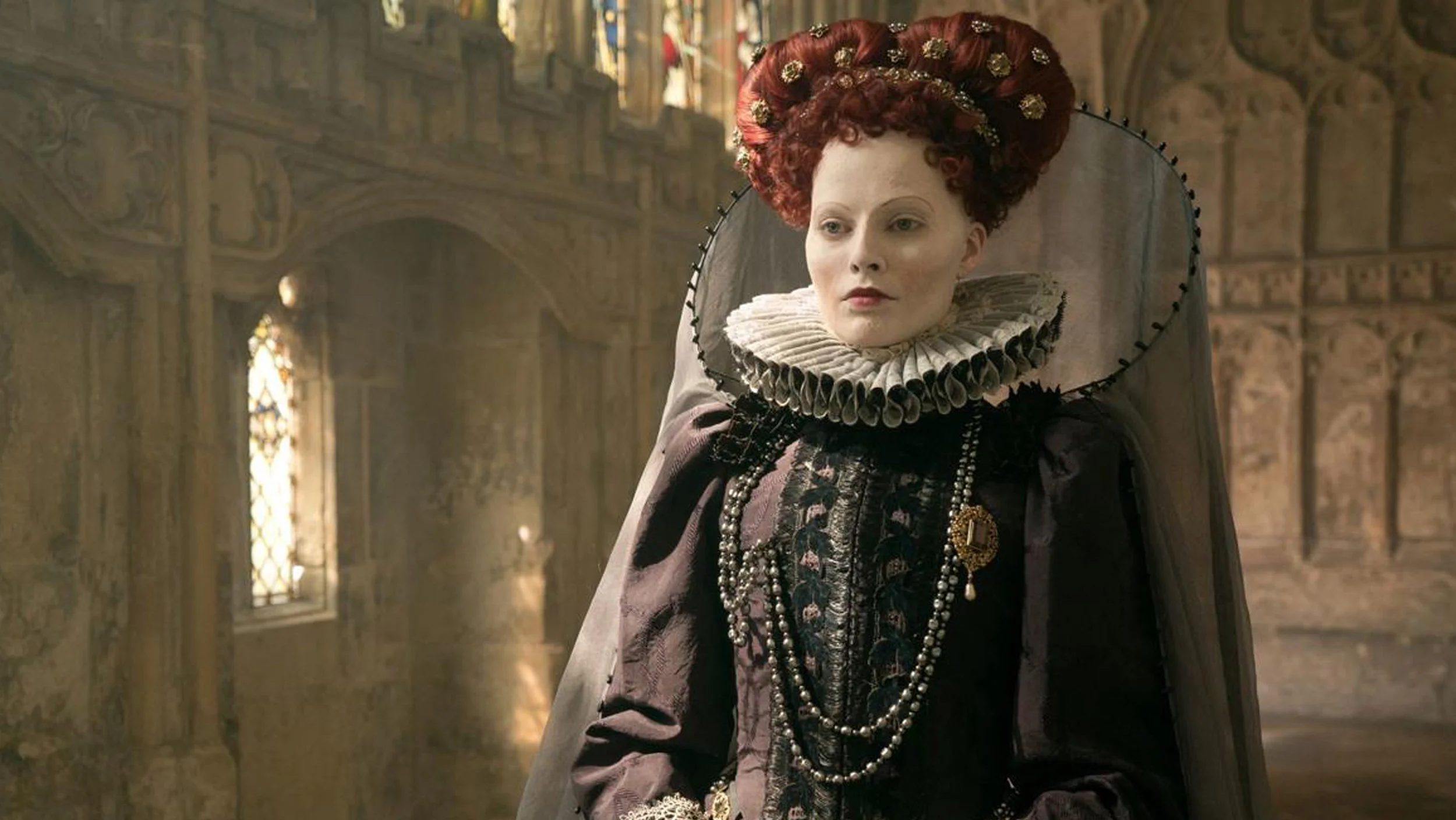The Plight of Power in a Patriarchal Society: A 'Mary Queen of Scots' Film Review
by Will Lindus
In 2017, Saoirse Ronan and Margot Robbie were riding a wave of well-deserved critical success based on their outstanding performances in Lady Bird and I, Tonya respectively. So strong were their performances that their announced joint project, playing a pair of powerful queens taking on a patriarchal society in the late 1500s, set #FilmTwitter on fire. As someone who stans both actresses - is it okay to use that term still? - I was very much a part of the initial and early clamor for Mary Queen of Scots, in love with the idea of seeing two of my current favorite actresses playing off one another. And no surprise, Ronan and Robbie are absolutely resplendent in their roles. I just wish the rest of the movie was stronger.
On December 14, 1542, Mary Stuart became Queen of Scotland at the very young age of *checks notes* 6 days old following the death of her father, King James V. Her young life was immediately preordained to follow the whims of powerful men, as she was sent to France at five years of age, promised as a bargaining tool to unite France and Scotland. There she remained, wed to the Dauphin of France at age 15 and widowed by age 18, before returning to Scotland to reacquaint herself with the tenuous Scottish political climate. It is there that she began to consolidate power and cast eyes upon the crown of England, a crown to which she had a legitimate claim due to her birthright. Unfortunately, standing in her way were Queen Elizabeth I, backed by Protestant factions who were wary of a power grab by the Catholic Mary, and the powerful lords and dukes who pitted the two women against each other.
It is in this span of time, from Mary’s return to Scotland through her eventual death that Mary Queen of Scots focuses its narrative. Both Mary and Elizabeth, as portrayed in the film, share a common desire for power as well as an intrinsic sense of decency which colors the more difficult decisions they are forced to make. They are forced to contend with their claims to the crown, with their distant relationship with one another, and with the scheming of practically every male in their vicinity.
It’s perhaps reductive to draw parallels between the staging of Mary Queen of Scots and the HBO fantasy epic Game of Thrones, but those parallels are fairly transparent. Both properties lean heavily into the salacious aspects of their stories, finding ways to capitalize on the drama found in sex, lies, political intrigue, and assassination plots. Perhaps the most scandalous revelations found in the film, especially those involving homosexual subplots, were fabricated whole cloth for the film based on no historical evidence. Even the color correction of Mary Queen of Scots reflects these comparisons, sharing a muted blue tint through most scenes that would feel very welcome in an average Game of Thrones episode. This is unfortunate because obvious care and attention was paid to the costuming and to the production design, but the colors and the details are swallowed by the dingy color correction.
As promised, Ronan and Robbie are the highlights. Ronan is powerful, vulnerable, ambitious and savvy as Mary, deftly navigating through an increasingly complex and treacherous political landscape. She doesn’t succeed at every turn, but even in her setbacks, Ronan finds ways to show Mary’s resolve. This isn’t quite the level of greatness found in Lady Bird, but in the dimly lit, bleak world of Mary Queen of Scots, Ronan shines like a beacon. Equally impressive is Margot Robbie’s Elizabeth, who steals practically every scene she is in. The film, unfortunately, devotes less screen time to Elizabeth than is needed, making her character feel oddly disconnected from many of the events of the film. But when she does get a chance to react to the machinations happening all around her, Robbie’s resigned desire for grace and dignity and her internalized anger are electric.
Throughout the film, the pair mostly never get a chance to directly interact with one another, though they do share several mail correspondences which showcase newcomer director Josie Rourke’s theatrical talents. See, despite this being Rourke’s first feature film, she has a storied background serving as the Artistic Director of the Donmar Warehouse, a world class theater house in London. As Mary and Elizabeth write one another, the film crossfades one to the other, narration transmitting the content of the letters, and it is easy to visualize this tactic occurring on two sides of a stage production.
The best scene of the film is the one scene in which the two women do finally meet face to face. The monarchs find themselves separated by veils of cloth, curtains streaming from the ceiling, as they discuss the intense roads that lead them to this encounter and the potential paths they can take going forward. The scene plays like a game of cat and mouse, with Rourke’s stage sensibilities most fully realized, and with two of the strongest actors of our day getting a chance to finally interact with one another. There’s a perfection to the pacing in the scene too, as the dialogue has time to breath, as their heavy emotions (externalized and internalized) are allowed to manifest, as the hope for reconciliation and peace hang precariously on every word the Queens say to one another. It’s a killer scene.
I wanted more of that. Instead, the majority of Mary Queen of Scots is occupied by a clumsy array of plot points, each one coming immediately on the heels of the prior one. Characters shift allegiances without proper set up as to their reasons why, then shift back, and then shift a third way. At times, it can be disorienting just trying to identify which supporting characters are taking which specific action, and to what ends. This is a film desperate for a more narrow focus, for more of its run time being devoted to motivation instead of merely cause-and-effect intrigue.
Bottom Line: When judged merely for the strength of its lead performances, Mary Queen of Scots is exceptional. Saoirse Ronan and Margot Robbie make the best of this material, proving that their success in 2017 wasn’t just a fluke. As performers, they have staying power. Unfortunately, a film cannot solely be judged by the strength of its leads. When considering the flow of the narrative, the scene-to-scene editing, the color grading, and the overall strength of the direction, Mary Queen of Scots is adequate but underwhelming.
3 out of 5 Bear Paws


